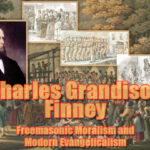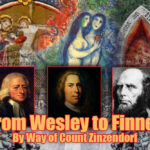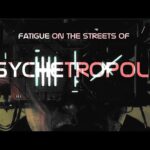All the churches are infiltrated. None are untouched. Not Charismatic, not Reformed, not anyone in between. It’s doctrine soup out there. All of it is truth mixed with heresy and very little of it is clear and easy to define. We need to hold onto the Word of God like never before.
This article is six parts and I don’t agree with their end-time beliefs, but reflecting back you can see that everything has been steadily building up to where we are now…..Trump will make it possible for “Christians” to invade the “spheres” and complete the 7 Mountain Mandate. Take over the world and hand it to Jesus on a gold plated (not silver) platter.
“Evangelical churches will be the chief instrument to bring the New World Order to birth.” – Jeremy Rifkin, The Emerging Order
Part 6: The Next Great Awakening. . .Or Great Deadening? | Herescope
“Dominion, suggests David Coe, Doug’s son, is ‘an invisible Kingdom,’ won not by conquest but through substitution, the replacement of democratic vistas with ‘His vision.’ Not through revival but through relationships, man by man.” –Jeff Sharlet, C Street[1]
“The first great evangelical awakening gave birth to the American Revolution. The second great evangelical revival spawned the abolitionist movement and helped trigger the Civil War….”
“…America’s two great spiritual awakenings of the past… serve as a base of operations for a challenge to the existing order or a catalyst for a revolutionary visions of society.”
“A new economic order is emerging in the world. It calls for a second Protestant reformation. The historical moment has arrived.” –Jeremy Rifkin, The Emerging Order[2]
Like the evangelical leaders who met together at the two Consultations on Future Evangelical Concerns,[3] Jeremy Rifkin’s blueprint for another Great Awakening was based upon the controversial 1972 Club of Rome report, The Limits to Growth, which predicted dire global catastrophes such as population growth, material consumption, pollution of the environment, etc. In fact, Rifkin, in his landmark book The Emerging Order, devotes an entire chapter (Chapter 3, “Limits to Growth”) to this topic. These crises are the foundation upon which he then proposed a radical solution – creating an “emerging spiritual revolution”(p. 91) and a “massive religious awakening.”(p. 92)
Rifkin explained that a global redistribution of wealth would “comprise only half the solution.” The earth would need a longer term “steady-state society,” an economy that would “require that each person live a much more frugal or spartan lifestyle.” In order to achieve this controversial goal, and to help people to accept these profound changes on the earth, he proposed a concurrent change in spirituality. Spirituality could appease the masses and give them new higher ideals. He called for a shift to the “spiritual and transcendent” (p. 90) in people’s values and worldviews; a “revolutionary change in myths, values, and governing arrangements;” a “metamorphosis in values and social behavior.” This new spirituality would facilitate “a qualitative leap from the end of one epoch into the beginning of another.”(p. 94-95)
Rifkin liked the mysticism he saw inherent in “Eastern religions” and the “human potential movement,” but he noted that a global “spiritualism” shift couldn’t be pulled off without the involvement of Christians. He explained his rationale:
“America is a Christian nation, and it is within the Christian community that a renewed religious awakening will be most deeply felt. In fact, though it is difficult to imagine, what may well emerge in the years to come is nothing short of a second Protestant reformation, one that may have as powerful an effect on the world as the first. Already Protestant doctrine is being transformed by the epochal shifts occurring in the economic world. These changes in doctrine are, in turn, beginning to shape and define the specific direction of these economic forces.”(p. 96) [emphasis added]
Rifkin believed that “people’s economic life is continually being defined by their religious convictions.” He held the First Reformation responsible for our modern consumer-based capitalism, writing a detailed historical chronology expressing his unique viewpoint that takes up several chapters in his book. In order to shift over to a new global economic order, which he said “is emerging from the realization that the world is moving from the age of growth to the age of scarcity,” he therefore saw the need for a radical “religious transformation that American Protestantism” should undergo”– in other words, “a massive religious awakening.”(p. 96)
The problem became one of mechanics. How could a Third Great Awakening be brought about, engineered, orchestrated and managed? Rifkin proposed jumping onto the evangelical movement’s bandwagon, particularly infiltrating its “communications network” and its community-based “infrastructure” with new theology. (p. 105)
To do this, Rifkin took note how evangelicals were utilizing the new technologies to convey their message. In the late 1970s, it was the rise of television that Rifkin observed was “dramatically changing the way people perceive Christian faith and doctrine.” Consider Rifkin’s remarks below in the context of subsequent rise of the personal computer, the Internet, and telecommunications:
“A revolution in Christianity is beginning to unfold, and it owes much of its impetus to television, just as the Reformation owed much of its impetus to print. The movement from print to TV has transformed the human mind. The sensual and experiential mode of instant television communicationshas replaced the objective and analytical mode of reflective print communications. Time and distance have been overtaken by spontaneity and immediacy. The individual no longer thinks as much as he acts. He no longer ponders as much as he experiences. This new conceptual mode will transform much of Christian doctrine between now and the turn of the century. The Charismatic phenomenon represents the first significant step in that transformation process….
“While evangelicals continue to exploit the TV medium to influence their public, they have not yet fully realized how much the medium, in turn, is influencing their own personal shifts in theological emphasis and interpretation.”(p. 113-114) [emphasis added]
Technology, then, would be the MEDIUM through which this shift in theological interpretation could occur. New doctrines could be widely promulgated by the new communication technologies. Finally there would be a way to get new doctrines into people, circumventing the traditional structures of denomination, pastorate and pew. People could be fed a constant diet of heretical doctrines via home-based technology. There were no holds barred. Through the ensuing decades evangelical theologians embraced an unethical “the ends justify the means” and “do whatever it takes” worldview that permitted them to utilize any aspect of technology for building their “kingdom.” In fact, leaders contextualized technology, applying its “truths” to their “all truth is God’s truth” mantra for transformation, and teaching an unsound “if it is available, it will be used for good” precept.
Rifkin divided the evangelicals and Charismatics into two groups for his planned “theological movement.” The evangelicals would be in charge of “developing a reformulated theological doctrine for a new order and a new covenant.” The Charismatics would be in charge of fueling a “liberating energy that is essential for any full-scale assault on the authority of the existing economic (and political) order.”(p. 169)
“If the Charismatic and the evangelical movements come together and effectively unite a liberating energy with a new covenant vision, America could experience a third great awakening.” (p. 169) [emphasis added]
Rifkin needed the mystical Charismatics to pull off the substantial doctrinal shift he was calling for. He noticed that “many evangelicals are putting more emphasis on the Holy Spirit…. This new emphasis on the Holy Spirit and revealed truths is a key theological link between the new evangelicals and the Charismatics.”(pp. 170-171)
“The Charismatic experience is one of the heart. It is a deeply subjective emotional encounter with God. It does not rely on the kind of rational scholasticism that is a central feature of more orthodox Christian belief.”(p. 180) [emphasis added]
To reformulate doctrine, Rifkin rejected “scriptural inerrancy” and biblical separation. He worried about the “mass anxiety wrought by the steady breakdown of the present system and emergence of a new and still undefined economic order….”(p. 219) This was a psychologized anxiety. Rifkin was concerned about how people would react to changing over to the new order. How could the mass anxiety of people on the planet be effectively managed when the old economic order shifts over to the radical new order? The only solution would be a new spirituality that was emotive, but also had a corresponding doctrinal justification for the extreme frugality that would be required. Rifkin offered a two-pronged solution that first “lies in the establishment of a new world view based on an ecologically balanced steady-state economic system.”(p. 221) And, second, he anticipated that the Charismatic’s de-emphasis on science and rationalism could provide “the liberating energy and the potential revolutionary power that could dislodge the existing order.”(p. 222)
“It is important to note the extreme nonrational anti-institutionalnature of the Charismatic movement. It is, first and foremost, a movement of the heart over the mind, of personal experience over objective analysis. The very basis of the Charismatic renewal is nonrational and subjective.”(p. 228)
But how to blend the more rational evangelicals with the Charismatics? Up to this point they had been separate camps. Rifkin wrote, “You have to break a few eggs to make an omelet.”(p. 232) The new economic order would require a “new covenant vision” to “maintain control over the country during a period of long-range economic decline.”(p. 241) Therefore, a “new covenant” doctrine would have to be concocted upon which everyone from all sides of the theological spectrum could rally around and agree – both political Right and Left, and both Protestant and Charismatic. This “new covenant” would bring in a new social gospel and a new eschatology. Not surprisingly, this shift would be to Dominionism!
Consider the radical nature of what Rifkin proposed thirty years ago:
“Genesis, Creation and the Steady State
“A major reformulation of Protestant doctrine is beginning to take shape. At its center is the story of creation from the Book of Genesis. This reformulation could set the stage for a third great awakening in America and a new covenant vision for a steady-state economic order. Not surprisingly, the theologians who are refocusing on the story of creation and redefining its central message are largely unaware of the profound revolutionary impact their theories could have upon America and the world. Nonetheless, their reconstruction of doctrine continues to ripple out into wider circles. If it becomes a tidal wave within the Christian community, then Luther and Calvin may well be retired to the theological archives to be replaced by the yet unnamed heretics of the second great reformation.
“Many evangelical and mainline Protestant scholars are beginning to argue that a basic redefinition of the story of creation provides the only viable starting point for establishing a new ecologically sound approach to people’s relationships to the world around them.”(pp. 241-242) [emphasis added]
Rifkin also proposed including another group of people to assist in this radical theological shift – Jim Wallis and the “new evangelicals.” Rifkin wanted to bring in this group, which was an early experiment in creating a Emergent movement, because they were “developing a very different approach to ecology.”(p. 245) Rifkin praised Wallis for his “theology of service” that championed the poor and worked against “economic injustice.”(pp. 174-5) And he especially liked the shift in doctrinal emphasis to collective salvation: “For the new evangelicals, sin is inherent to both the individual and the institutions. Both are fallen, both need to be changed.”(p. 176) Notably, in the years to come, Wallis would engage in an ongoing dialectic with the Christian Right, championing Leftist causes against the extremes of the Religious Right. As the Emergent Church movement has grown, Wallis has regained prominence and influence, touting a “third way.”[5]
Rifkin especially liked the fact that the “new evangelicals” believed that there was a “mistake in Christian doctrine,… the misinterpretation of the concept of dominion in the Genesis account of creation.”(p.245) He noticed, “Now, for the first time, evangelical scholars are beginning to redefine the meaning of dominion, and in so doing, they are creating the theological foundations for a steady-state world view.”(p. 245) These “new evangelical scholars” were developing theologies that taught that “anything that exploits or harms God’s creations is sinful and an act of rebellion against God himself.”(p. 245) Worse, “anything that undermines the ‘fixed’ purpose and order that God has given to the natural world is also sinful and an act of rebellion. This is no small theological point.”(p. 245-6) So, according to this worldview, “Dominionism means stewardship over nature.”(p. 246) And there are serious penalties for non-compliance with the stewardship/Dominion mandate. This then leads to the idea of a covenant.
Throughout the book, Rifkin continually refers to the necessity for a new covenant. His obsession with covenants may explain the preponderance of charters, covenants, declarations and manifestos arising from the various sects of Dominionism today. Rifkin explains that the “new definition of dominion, though popularly embraced, has not yet been formally consecrated as the theological foundation for a new Christian world view.” But when a new Dominion covenant can be agreed upon, “Protestantism will take an unalterable turn toward a second reformation”(pp. 247-8)[emphasis added]. Covenants, then, become a binding mechanism to enforce the new theologies.
Jeremy Rifkin was always big on entropy, even writing a book about it entitled Entropy: A New World View (Bantam, 1981). He held to an idealistic feature of a Dominionist worldview where entropy could be “dramatically reduced, extending the life of the world’s ecosystem for millions of years into the future.”(p. 250) This would require the cooperation of people on the planet. He was optimistic that the “laws of thermodynamics are finally being rediscovered and redefined within a broader theological and philosophical context,” and proposed that these laws could “become the philosophical and metaphysical focus for the new age of scarcity”(p. 251) [emphases added].
But there remained one problem. Rifkin was upset about premillennialism. It would have to give way to a “new creation theory” inherent in a stewardship of the earth covenant.
“When combined with more orthodox evangelical theology, the new creation theory and the laws of thermodynamics set the tone for areformulation of Christian doctrine and a covenant that is suited to the ecological prerequisites of a steady-state social order. Still there remainsone critical obstacle in the way of such a development. The currentpremillennial attitude prevalent among most evangelicals is at direct odds with some of the interpretations of the creation story that have been set forth….
“Their attention has become so riveted on anticipation of the coming of the kingdom and saving as many souls as possible in the remaining time, that they have left God’s created order unguarded and unprotected. In not honoring their covenant to God to serve as stewards, the premillennialists are acting in direct rebellion. Secondly, by doing nothing to resist or slow down the ongoing forces of disorder and chaos, they are not only showing disrespect for God’s creations, but they are also failing to bear their cross, that is, to act as witness to the glory of God’s order and the future coming of the kingdom…. In their noninvolvement, they are as guilty of disrespect for God’s creation as those who exploit the earth directly.”(p. 251)
“The new interpretation of the creation story is as theologically significant for the future steady-state society as Calvin’s Reformation doctrine was for the emergence of the expansionary era of capitalism.”(p. 252)
Rifkin went on to espouse a radical new economic theory based on this reinterpreted Dominionism doctrine. He proposed an end to individual autonomy, private ownership and accumulation of wealth,(p. 253) even going so far as to radically propose that “the entire concept of private ownership of land and resources is an act of rebellion” by “violating God’s covenant and his relationship with the rest of creation.”(p. 254) Like the modern Emergents today, he suggested a Dominionist worldview that would “create a reverence or respect toward creation.”(p. 255) From here it is only a slight leap to the Christian Right’s similarly redefined Genesis 1 mandate to “subdue” and “rule” the earth and bring in the kingdom of God.
Rifkin gets downright bizarre. He was upset that people were getting their “psychic energy” from the various therapies, cults, and “numerous psychological and spiritual encounter groups,” which he felt only served to fuel their excessive consumerism. He wanted to switch their emotive allegiances because there would have to be stringent new “limits placed on them by God’s order and creation.”(p. 262) These limits are steeped in his Communitarian worldview, which he explains in Chapter 4 as “public stewardship for the common good” and “public duty and responsibility.” (p. 90) A switch in worldview was necessary, “forcing a revolutionary change in myths, values, and governing arrangements.”(p. 94-5) The Bible could be wielded as a tool to enforce these limits:
“Fallen people, say the evangelicals, are people who refuse to accept the real limits placed upon them by God’s order and creation. By reasserting the belief that human beings are fallen, and by placing self-imposed limits on what they can do and what they can’t do—those limits being prescribed in the Bible as God’s revealed truths and commandments—the evangelicals say that a semblance of order and discipline can be restored to the world and God’s natural order.”(p. 262)
However, Rifkin had his own limits. And his limits for the coming global society would not apply to sexuality. Rather, “The new interpretation of the creation doctrine would hold that sex is something to enjoy and appreciate.” Worse, he suggested penalties for not embracing this new unlimited sexual freedom:
“Any behavior, therefore, that undermines the natural pleasure of sex, overconsumes sexual activity and fails to respect the intrinsic self-worth and sexual equality of others is an act of rebellion against God and God’s created order.”(p. 263)
To accomplish this, Rifkin deconstructs the traditional family into a “reconstructed family” that could play “a new role—one of caretaker or steward,” and a “primary regulator and enforcer of the communal economic norms of a steady-state society.”(p. 266)
Finally, in a subsection entitled “Toward a Second Protestant Reformation,” Rifkin asserts that his “new stewardship doctrine turns the modern world view upside down.”(p. 270) His “newly defined creation doctrine” effectually becomes the Dominion Mandate.
“…[T]he new stewardship doctrine represent a fundamental shift in humanity’s frame of reference. It establishes a new set of governing principles for how human beings should behave and act in the world. As a world view, the stewardship doctrine demands of the faithful an uncompromising allegiance.”(p. 270)
“Faith healing, speaking in tongues and prophesying are, indeed, weapons of rebellion against the authority of the modern age.
“Similarly, by radically redefining humanity’s relationship to the rest of God’s creation, contemporary evangelical scholars are thrusting a theological dagger directly into the heart of the expansionary epoch. The new concept is that dominion is stewardship…. This belief is at loggerheads with both the [First] Reformation and the materialist world view of the past several hundred years. By refocusing the story of creation and humanity’s purpose in the world, evangelical theologians have committed an act of open rebellion against their own Reformation roots…. The new emphasis on stewardship is providing the foundation for the emergence of a second Protestant reformation and a new covenant vision for society.”(p. 271)[bold and color emphases added]
Jeremy Rifkin said it. We didn’t: “evangelical theologians have committed an act of open rebellion against their own Reformation roots.” Which is a rebellion against Scripture and its Gospel of Salvation.
Jeremy Rifkin’s blueprint for an “emerging order” set in motion a series of changes that took decades to put into full operation. Obviously, he wasn’t the only proponent to call for a radical restructuring of evangelical doctrine in that era. But over the years his book has proven to be most consistently on target as a “blueprint” for a new postmodern era. Finally, in the past several years, with the open rise of Dominionism and its flagrant mandate to take control of the cultural centers of the country (and the world), Rifkin’s plan can be seen in its full global scope. The power elite of the Religious Right and Left have done their dialectic dance long enough. The merger of “the great emergence” is about to begin. . . . and it will be no “great awakening,” but rather a terrible spiritual deadening to the Gospel of Salvation.
The Truth:
Just for the record, this blueprint of Jeremy Rifkin’s is New Age to its core. Author and prominent researcher of the New Age movement, Constance Cumbey, recorded in her 1985 book A Planned Deception, that Rifkin had written a new book, “appropriately entitled Declaration of a Heretic” in which “he has come forth with the references to enable Christians and others to fulfill their duty as ‘earth stewards.'” Rifkin had come out of the closet as a New Ager. Among the New Age references in that Rifkin book included the Findhorn Community, David Spangler, Roberto Assagioli, Carl Jung, Teilhard de Chardin, Donald Keys, Gerald and Patricia Mische and Rudolph Steiner.[6]
“In whom we have redemption through his blood, the forgiveness of sins, according to the riches of his grace;… In whom ye also trusted, after that ye heard the word of truth, the gospel of your salvation: in whom also after that ye believed, ye were sealed with that holy Spirit of promise.” (Ephesians 1:7, 13)
“For I am not ashamed of the gospel of Christ: for it is the power of God unto salvation to every one that believeth.” (Romans 1:16a)
Endnotes:
1. Jeff Sharlet, C Street: The Fundamentalist Threat to American Democracy (Little, Brown & Co., 2010), p. 43.
2. Jeremy Rifkin with Ted Howard, The Emerging Order: God in the Age of Scarcity (G.P. Putnam’s Sons, 1979), pp. 104-5, 272.
4. Evangelicals Face the Future: Scenarios, Addresses, and Responses from the “Consultation on Future Evangelical Concerns” held in Atlanta, Georgia, December 14-17, 1977, Edited by Donald Hoke (William Carey Library, 1978). An Evangelical Agenda: 1984 and Beyond: Addresses, and Responses from the “Consultation on Future Evangelical Concerns” held in Overland Park, Kansas, December 11-14, 1979 (William Carey Library, 1979). The Discernment Research Group first broke this story in September 2005 in a series of posts that ran into October 2005. One can look through the posts to read more details about these consultations.http://herescope.blogspot.com/2005_09_01_archive.html andhttp://herescope.blogspot.com/2005_10_01_archive.html
5. See “A Covenant for Civility: A New Order of the Third Way,” 3/31/10,http://herescope.blogspot.com/2010/03/covenant-for-civility.html, and various posts on apprising.org, such as :
http://apprising.org/2010/09/19/sojourners-of-jim-wallis-teaches-us-lectio-divina/
http://apprising.org/2010/09/15/jim-wallis-says-your-salvation-isnt-yours/
http://apprising.org/2010/08/20/jim-wallis-admits-to-soros-funding/
6. Constance Cumbey, A Planned Deception: The Staging of a New Age “Messiah,” 1985. This rare book can now be downloaded by going here: https://public.me.com/cumbey, pp. 162-3.










